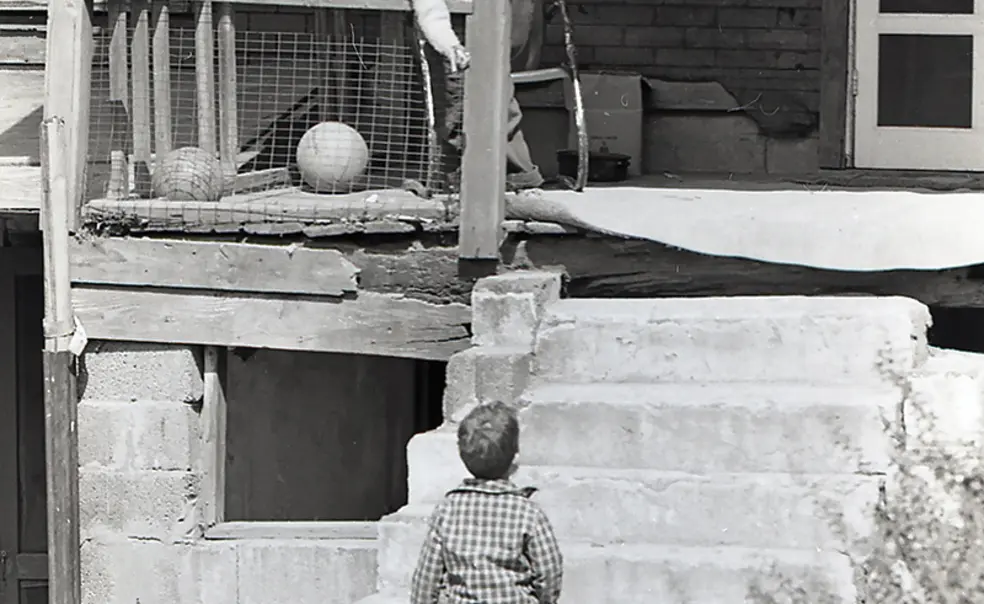Al Siegel ’53 Captured a Pivotal Moment for a Historic Black Community
Siegel’s photographs of poor living conditions in Maryland helped prompt new housing in 1969
In 1965, Al Siegel ’53 and his wife, Joyce, learned that there was a community a few miles from their home in North Bethesda, Maryland, that was steeped in poverty. The community of Black residents, known as Scotland, had no electricity and no running water. There was no garbage collection.
The couple began visiting the community in Potomac, which was established after the Civil War when freed Blacks were first able to buy property. Al brought his camera.
“Photography was a hobby of mine. I was always taking pictures,” says Al, who built a darkroom in his house. “When Joyce got involved with the Scotland community, I ended up documenting what she was doing.”
Al’s photographs captured the poor living conditions, with children playing on dirt roads and in yards dotted with outhouses. Joyce took her concerns to the local government and later brought Al’s photos with her when she spoke at a hearing at the U.S. Senate. The photos ended up on the front page of the local newspaper. “The photos told the whole story. They got the public’s attention and the politicians’ attention,” Joyce says.
Lawmakers in Congress eventually passed the Housing and Urban Development Act, which increased funding for housing projects. The first loan from the new program helped build a complex of townhomes in Potomac for Scotland residents.
Five decades later, Al ran across his photographs of the Scotland community when the couple was packing up to move. He donated all the images, which numbered more than a thousand, along with the negatives, contact sheets, and news clippings, to Montgomery History, the area’s historical society.
“The Siegel collection is quite valuable,” says Sarah Hedlund, director of library and archives for Montgomery History. It has provided researchers and members of the Scotland community with “a rich documentary history of a specific time period in their development.”
The photos capture many stages of that history, from the rundown conditions of the area in 1965 to residents swinging axes at their old homes before they were demolished to make way for new homes. The Siegel collection, which was digitized in 2018, is often requested by journalists and documentary filmmakers, Hedlund says.
Al has enjoyed photography since he was a teenager. At Princeton, he worked as an assistant in what is now the Department of Civil and Environmental Engineering, where he took photos of classroom experiments using a portrait camera.
After graduating, Al worked for Lockheed Martin on designs for guided missiles. He later held positions at NASA and the federal Department of Housing and Urban Development.
Al, who is now 92, says he didn’t realize the significance of the photos until recently. “I must admit, I never really thought about the importance of the images,” he says. “But I am happy I took them.”











No responses yet